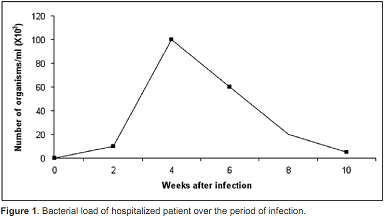Assignment Task:
Question 1: Distinguish among helical, polyhedral, enveloped, and complex viruses, and provide one example of each.
Question 2: The following questions pertain to viruses and infectivity:
a) Draw a simple diagram of a bacteriophage, and label the capsid, sheath, nucleic acid, base plate, and tail fibres.
b. A scientist wanted to test the infectivity of two new bacteriophage (phages) on a strain of E. coli. In doing so, the scientist mixed a sample of the organisms together with each phage and distributed the samples in molten agar after incubating the mixtures for a period of up to three hours. Table describes the results obtained.
i. Draw a clearly labeled and titled graph comparing each sample for each time point given.
ii. Compare the effectiveness of each of the phages used.
iii. Explain why scientists use phages in their research studies.
TABLE 1: Infectivity of phage A and phage B on E. coli over time, represented in plaque-forming units per ml.
|
Time (hours)
|
Phage A (pfu/ml)
|
Phage B (pfu/ml)
|
|
1
|
40
|
2
|
|
2
|
120
|
30
|
|
3
|
300
|
40
|
Question 3: Outline the major steps involved in the multiplication of Poxviridae.
Question 4: A patient was admitted to hospital with a high fever (40oC), a headache, and diarrhea. He informed the doctor that he had returned from travelling abroad two weeks earlier. Microbiological examinations indicated that the patient was infected with a species of Salmonella. During the course of hospitalization, the patient was treated with a quinalone antibiotic and the numbers of organisms in the blood were monitored. The graph below shows the infectivity curve. The values shown on this curve are the numbers of organisms/ml over the course of the illness.
a. Use your knowledge of the disease process, the epidemiology, and the information provided to describe the stages of this disease.
b. Identify the disease and the causative agent in this case. Suggest the possible source of this infection and how this illness could have been prevented.

Question 5: Column A lists terms related to epidemiology and diseases. Column B lists descriptions and definitions. For each term listed in Column A, select the answer from Column B.
|
Column A
|
Column B
|
|
pandemic disease
|
a. early symptoms of infection
|
|
septicemia
|
b. symptoms
|
|
nosocomial infection
|
c. world-wide effects
|
|
prodromal period
|
d. cause of disease
|
|
acute disease
|
e. afflicts large numbers of people
|
|
epidemic disease
|
f. causes fever
|
|
pathology of disease
|
g. non-communicable disease
|
|
incidence
|
h. infection that lasts for a brief period
|
|
etiology of disease
|
i. hospital-acquired
|
|
not spread from one host to another
|
j. number of people infected during a particular time period
|
Question 6: Foot-and-mouth disease (FMD) is a life-threatening disease of unvaccinated livestock. In a study of this disease, unvaccinated cows were treated with one of five concentrations of viral particle in suspension. Each treatment was administered to 20 cows; 10 received a liquid suspension injected into the tongue, and another 10 received an aerosol suspension. The results of this study are summarized in Table 2.
a. Describe the virulence of this organism by expressing the infectious dose of each mode of inoculation.
b. Compare the results of the two experimental procedures.
c. How would the researchers use the same experimental procedure to test the lethal dose of these organisms?
d. Describe an experiment to test the effects of a vaccine of FMDV.
TABLE 2: Number of infected cows following injection or aerosol administration of Foot-and-Mouth Disease Virus (FMDV).
|
Concentration (viral particles/ml)
|
Number of cows infected by injection
|
Number of cows infected by aerosol
|
|
0
|
0
|
0
|
|
103
|
2
|
0
|
|
104
|
5
|
1
|
|
105
|
7
|
3
|
|
106
|
10
|
5
|
Question 7: Fill in the table below pertaining to microbial mechanisms of pathogenicity.
|
Virulence Factor
|
Function or Effect on the Host
|
Example of a Bacterium that Produces it
|
Benefit for the Bacterium
|
|
Adhesin
|
|
|
|
|
Capsule
|
|
|
|
|
M protein
|
|
|
|
|
Hyaluronidase
|
|
|
|
|
Exotoxin
|
|
|
|
Question 8: Define innate immunity and describe the role of mucous membranes in innate immunity.
Question 9: How does fever contribute to non-specific defense?
Question 10: Where is the complement system found? If a person had a deficiency in any of the complement proteins C5b through C9, what would they be unable to form and what would be the result? From what bacterial species would this person be more likely to develop infections?
Question 11: Draw a diagram of a typical antibody molecule, and indicate the following: heavy chain, light chain, Fc region, variable region, and antigen binding site.
Question 12: Illustrate and explain how a virus-infected cell is killed by a cytotoxic T lymphocyte.
Question 13: Define autoimmune disease and give an example of an autoimmune disease.
Need a qualified and talented tutor from the Virus and Infection Assignment Help service for precisely finishing your university assignment tasks within the given time frame? Then, don't think too much and get in touch with the proficient tutors of Tutorsglobe and boost up your academic grades at viable prices.
Tags: Virus and Infection Assignment Help, Virus and Infection Homework Help, Virus and Infection Coursework, Virus and Infection Solved Assignments, Innate Immunity Assignment Help, Innate Immunity Homework Help, Epidemiology Assignment Help, Epidemiology Homework Help